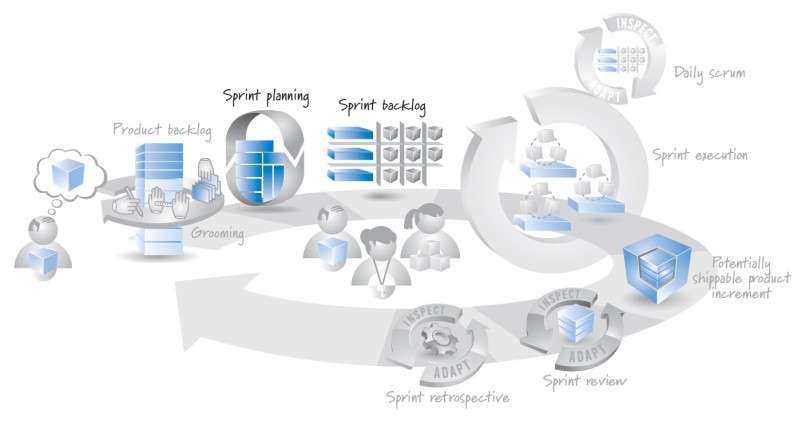The Development Team is made up of the professionals who do the work of delivering the Product Increment. They self-organize to accomplish the work. Development Team members are expected to be available to the project full time.
Traditional software development approaches define various job types, such as architect, programmer, tester, database administrator, UI designer, and so on. Scrum defines the role of Development Team, which is simply a cross-functional collection of these types of people. The Development Team’s members, collectively, have the skills required to deliver the business value requested by the Product Owner. Whenever you can, you should create cross-functional teams. Parcelling the work out to different role-specific teams is suspect and is likely a serious impediment to the successful use of Scrum.
At the beginning of each Sprint, the Development Team participates in Sprint Planning. In collaboration with the Product Owner and with facilitation from the Scrum Master, the Development Team helps to establish the goal for the next sprint.

